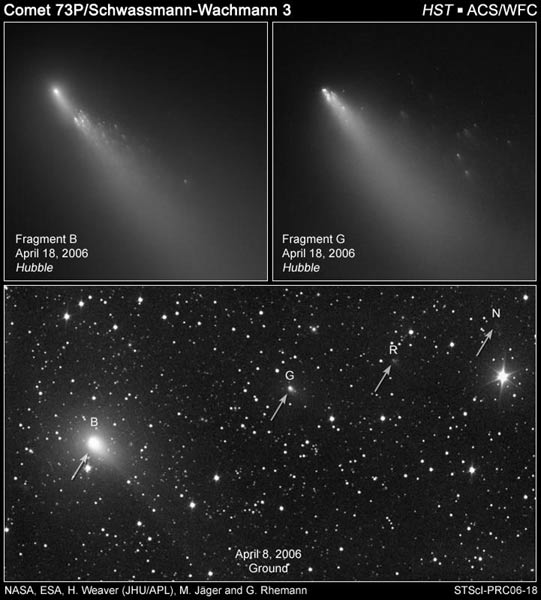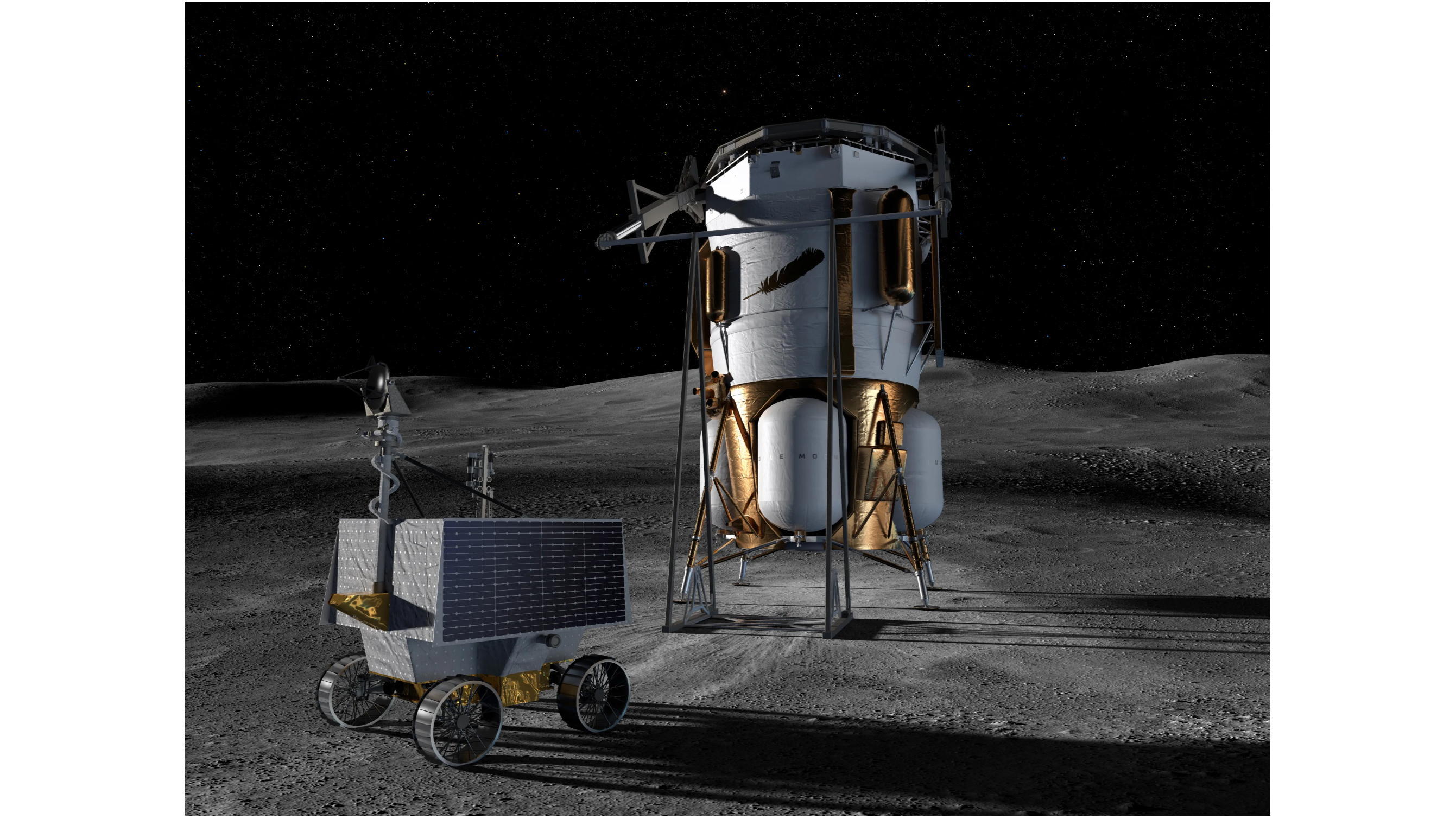NASA Says Comet Fragments Won't Hit Earth

Chunks of acomet currently splitting into pieces in the night sky will not strike theEarth next month, nor will it spawn killer tsunamis and mass extinctions, NASAofficials said Thursday.
Theannouncement, NASA hopes, will squash rumors that a fragment of the crumbling Comet73P/Schwassmann-Wachmann 3 (SW 3) will slam into Earth just before MemorialDay.
"There are someInternet stories going around that there's going to be an impact on May 25,"NASA spokesperson Grey Hautaluoma,told SPACE.com. "We just want to get the facts out."
Astronomershave been observing 73P/Schwassmann-Wachmann 3, acomet that circles the Sun every 5.4 years, for more than 75 years and areconfident that any of the icy object's fragments will remain at least a distant5.5 million miles (8.8 million kilometers) from Earth - more than 20 times thedistance to the Moon - at closest approach between May 12 and May 28.
"Weare very well acquainted with the trajectory of Comet 73P Schwassmann-Wachmann3," said Donald Yeomans, manager of NASA'sNear-Earth Object Program Office, in a written statement. "There isabsolutely no danger to people on the ground or the inhabitants of theInternational Space Station, as the main body of the object and any pieces fromthe breakup will pass many millions of miles beyond the Earth."
Themain SW 3 fragment, dubbed Fragment C, will make its closest pass by Earth onMay 12 at a safe distance of 7.3 million miles (11.7 million kilometers), NASAsaid, adding that skywatchers will be able to usesmall telescopes to spot the cometchunks by scanning the constellation Vulpelcaduring the early-morning hours. [Click herefor a map of SW 3's path across the sky.]
NASA'sHubble Space Telescope and otherinstruments have been watching SW 3's disintegration. The comet's numerousfragments stretch across several degrees of the night sky. For comparison, theMoon's diameter covers about one-half a degree in the sky.
Breaking space news, the latest updates on rocket launches, skywatching events and more!
"Catastrophicbreakups may be the ultimate fate of most comets," explained Hal Weaver, aplanetary astronomer of the Johns Hopkins University Applied PhysicsLaboratory, in a statement.
Weaverled a team of researchers during the Hubble observations of SW 3, and used thespace telescope to study the break up of comets Shoemaker-Levy 9 - which was ripped apart by Jupiter's gravity and hit the giant planetbetween 1993 and 1994 - Hyakutake in 1996, and 1999 S4(LINEAR) in 2000, NASA said.
Hubble'snew SW 3 observations suggest that chunks of the comet are pushed behind itstail by the outgassing of Sun-facing pieces. Smallerpieces appear to be ejected from their nucleus faster than their largerbrethren, while other fragments seem to simply fade away.
Whenset alongside studies by other observatories, Hubble's images may help astronomersdetermine what is causing the comet's disintegration as it nears the Earth andSun, the space agency added.
Germanastronomers Arnold Schwassmann and Arno Arthur Wachmann firstdiscovered the SW 3 comet in 1930 while hunting for asteroids. Despite itsrelatively short orbital period, the icy object was not seen again until 1979,and then was missed during a 1985 pass.
Sincethen, however, astronomers have kept a close eye on SW 3 and in 1995 observed itsinitial break up.
Asidefrom a great sky show, the comet poses no danger to Earth and its inhabitants,NASA officials said.
- Image of the Day: Shattered Comet
- How to Spot a Crumbling Comet
- Broken Comet On Its Way
Join our Space Forums to keep talking space on the latest missions, night sky and more! And if you have a news tip, correction or comment, let us know at: community@space.com.

Tariq is the award-winning Editor-in-Chief of Space.com and joined the team in 2001. He covers human spaceflight, as well as skywatching and entertainment. He became Space.com's Editor-in-Chief in 2019. Before joining Space.com, Tariq was a staff reporter for The Los Angeles Times covering education and city beats in La Habra, Fullerton and Huntington Beach. He's a recipient of the 2022 Harry Kolcum Award for excellence in space reporting and the 2025 Space Pioneer Award from the National Space Society. He is an Eagle Scout and Space Camp alum with journalism degrees from the USC and NYU. You can find Tariq at Space.com and as the co-host to the This Week In Space podcast on the TWiT network. To see his latest project, you can follow Tariq on Twitter @tariqjmalik.
